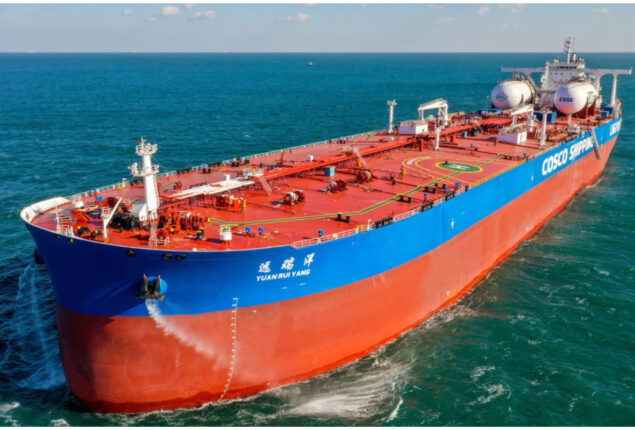Latvia bans a Russian TV station for broadcasting Ukraine war
After less than five months on the air, TV Rain, Russia's last...

India and China becomes the largest Russian oil buyers
Uncertainty has been brought about by a plan by the main G7 economies, supported by the EU and Australia, to cap the price at which Russian oil is purchased.
Additionally, Russia has been selling its oil at a discount to eager customers in Asia as major oil-producing countries try to maintain world prices by limiting output.
From a relatively low foundation at the beginning of the year, India’s imports of Russian oil have increased, hitting a peak in June and July and essentially holding these levels through to November.

This year, China’s purchases of Russian oil have varied, dipping in February at the beginning of Russia’s invasion of Ukraine before sharply increasing in the months that followed.
Since March of this year, following the invasion of Ukraine, Russia has been offering its oil at a reduced price.
China and India’s total oil imports from Russia surpassed those of the 27 EU members in March. There seems to have been a new uptick in India’s oil purchases starting in late November.
According to Matt Smith, an oil analyst at Kpler, “it is probably a hint that loadings have rotated away from going to EU 27 countries and are going to India instead.”
According to experts, Russia may surpass all other suppliers to India if oil supplies remain steady in December.
Other nations have also benefited from the cheaper price of Russian petroleum, such as Sri Lanka, which has been experiencing a severe economic crisis.
Although no agreement has yet been reached, Pakistan has also been negotiating with Russia to buy oil at a reduced price.
As a result of its invasion of Ukraine, Russia lost certain international governments and businesses as clients for its Ural crude oil, which caused its price to drop.
Russian Urals crude briefly cost less than $30 less per barrel than Brent crude earlier this year (the global benchmark).
In September, the discount decreased to $20 a barrel less, but then rose once again, reaching a discount of $33 a barrel when compared to Brent crude in November.
The Russian oil is cheaper there, thus the Indian government has defended its purchases of Russian oil.
Although it has now been made plain that it accepts India’s right to continue purchasing Russian oil at a reduced price, the US administration had previously criticised these transactions.
In response to the invasion of Ukraine, the EU fully ceased importing Russian oil by sea.
According to Matt Smith of Kpler, “weak enforcement of the price ceiling may rule it ineffectual” now that the G7 price cap agreement, to maintain Russian exports at or below $60 (€57; £48) a barrel, is in place.
However, experts also point out that a complete ban on Russian oil may have brought about more market instability and potential price increases for oil (from which Moscow could benefit).
What effect the price cap would have on nations like India and China, which currently purchase Russian oil at a discount, is not yet known.
Moscow has said that it will halt trading with nations that support the G7’s decision to impose price ceilings.
However, Maria Shagina, a research researcher at the International Institute for Strategic Studies, claims that Russia would find it “more expensive, time-consuming, and complicated” to shift oil from the EU to Asia.
Russian crude oil offers a competitive price, but India’s refineries have had trouble financing acquisitions since Russian bank sanctions are impairing payment exchanges.
One of the solutions India looked at was a system based on regional currencies, where imports would be paid for in rupees and exports would be paid for in roubles rather than dollars or euros. That didn’t turn out well.
However, instead of using the dollar to finance its oil purchases, China’s state-owned oil companies are increasingly employing the Chinese yuan.
Nearly half of India’s total gas needs are met by imports, primarily from the Gulf States and with very little coming from Russia.
Liquefied natural gas (LNG) deliveries from Russia to India are uncommon, according to Antonio Peciccia of Argus media. This year, there have been fewer cargoes than last, with only five believed so far.
The majority of China’s gas comes from Central Asia via pipeline. Turkmenistan is currently the main provider.
But once a new pipeline, called Power of Siberia, is finished later in this decade, Russia might overtake the United States as China’s top gas supplier.
And although the majority of China’s LNG still originates from other nations, there has been a noteworthy rise in LNG imports from Russia this year.
Additionally, China has made new agreements to ship Russian LNG across the Arctic.
Catch all the Russia-Ukraine News, World News, Breaking News Event and Latest News Updates on The BOL News
Download The BOL News App to get the Daily News Update & Follow us on Google News.